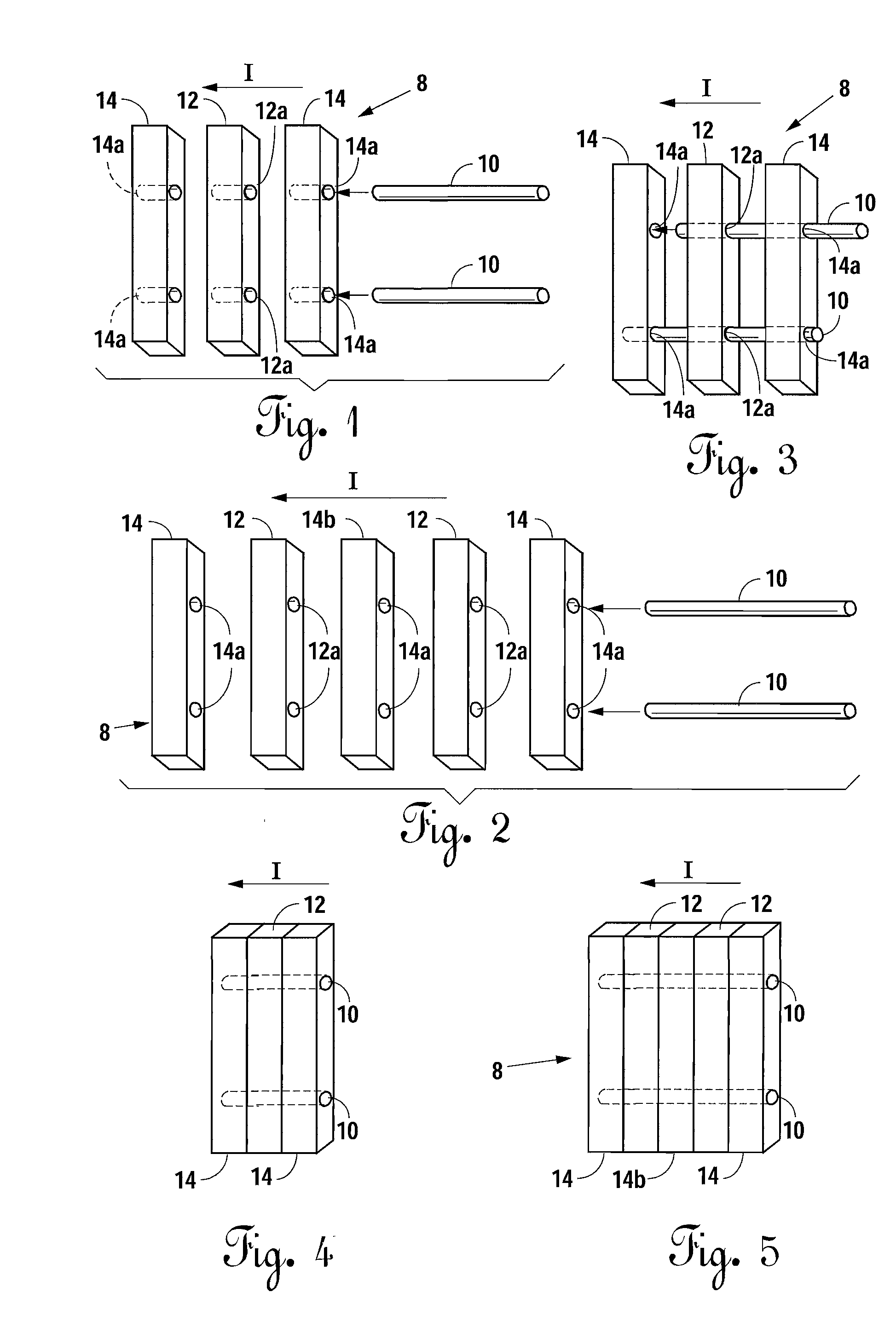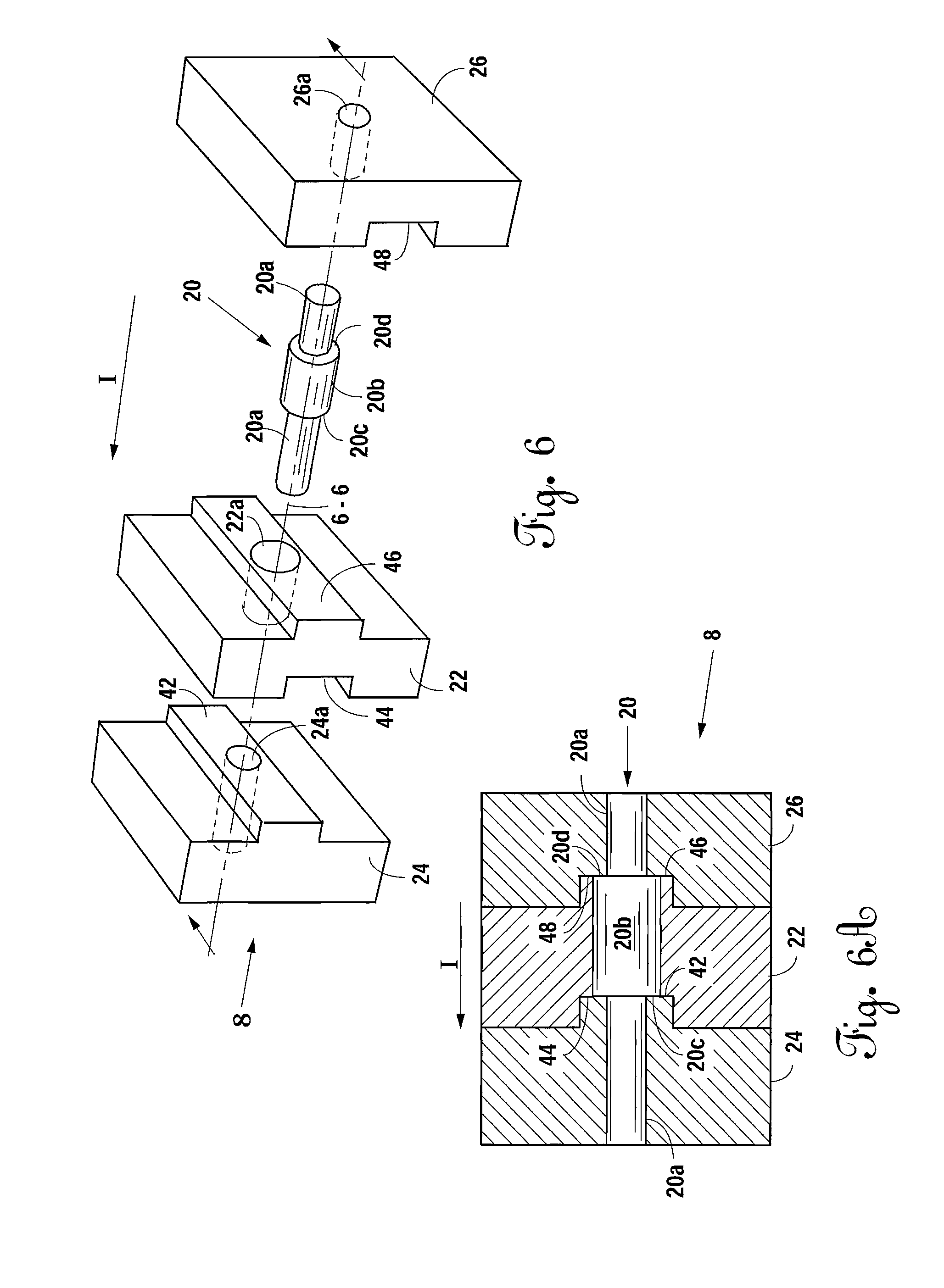Multiple wafer cortical bone and cancellous bone allograft with cortical pins
a cancellous bone and multi-layer technology, applied in the field of bone allografts, can solve the problems of cancellous bone or cancellous bone simply collapsing or crushing between the cortical end wafers, and achieve the effects of reducing the stress placed on the allograft, preventing fracturing, and adding stability to the allogra
- Summary
- Abstract
- Description
- Claims
- Application Information
AI Technical Summary
Benefits of technology
Problems solved by technology
Method used
Image
Examples
Embodiment Construction
[0039]Referring to FIGS. 1-5, bone allografts 8 of one embodiment of the present invention are disclosed. In FIGS. 1-8 herein reference arrow “I” refers to the plane and direction of insertion of the allograft 8 of the present invention into the surgically altered site of the human (not shown). Referring to FIGS. 1, 3 and 4, an embodiment depicting a three-wafer allograft 8 is disclosed. The three-wafer allograft 8 has two end wafers 14. Wafers 14 are cortical bone wafers. A cancellous bone wafer 12 is disposed adjacently between cortical wafers 14.
[0040]Each cortical wafer 14 and cancellous wafer 12 has at least one canal 14a and 12a, respectively. The canals 14a and 12a are all substantially aligned with one another such that cortical pin 10 is inserted through the canals 14a and 12a of the cortical wafers 14 and cancellous wafers 12, respectively, to form the allograft 8. Cortical pin 10 is preferably made of cortical bone, and is constructed of a single piece of cortical bone. H...
PUM
 Login to View More
Login to View More Abstract
Description
Claims
Application Information
 Login to View More
Login to View More - R&D
- Intellectual Property
- Life Sciences
- Materials
- Tech Scout
- Unparalleled Data Quality
- Higher Quality Content
- 60% Fewer Hallucinations
Browse by: Latest US Patents, China's latest patents, Technical Efficacy Thesaurus, Application Domain, Technology Topic, Popular Technical Reports.
© 2025 PatSnap. All rights reserved.Legal|Privacy policy|Modern Slavery Act Transparency Statement|Sitemap|About US| Contact US: help@patsnap.com



